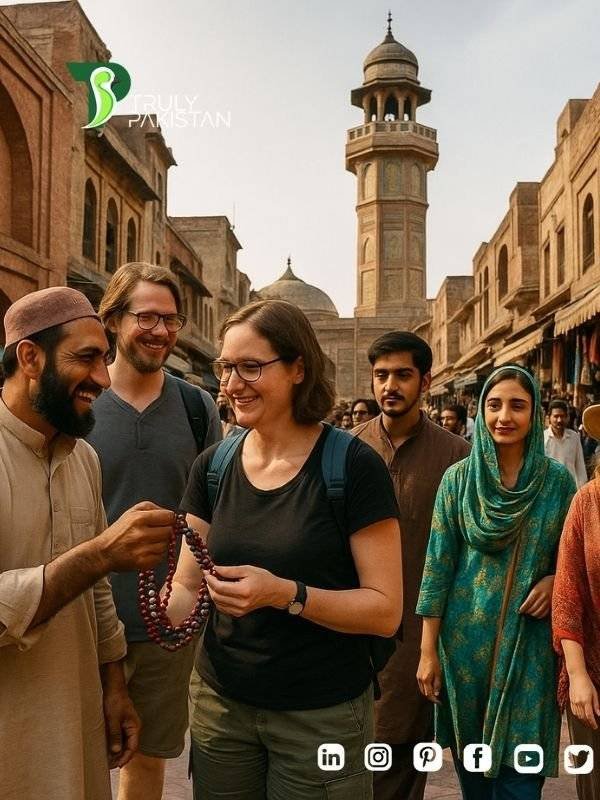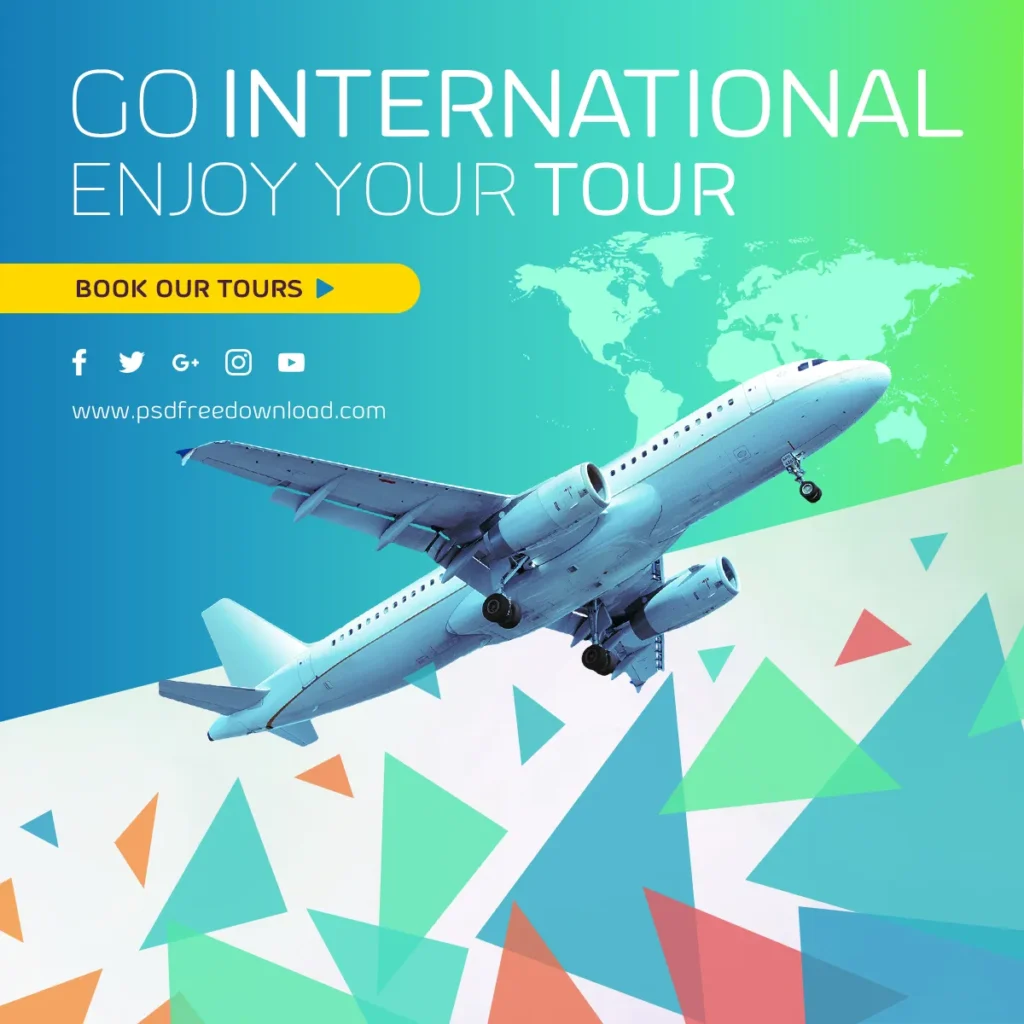Pakistan Tourism Growth: What’s Fueling the Surge and What Comes Next


Tourism in Pakistan is no longer just a “potential” — it’s a fast-expanding sector that is finally gaining momentum. After years of being overlooked on the global tourism map, Pakistan is now being rediscovered, not just by international travelers but also by its own citizens. From scenic valleys and historical forts to spiritual sanctuaries and food streets, the country’s tourism footprint is growing — and so is its economic impact.
As someone who has worked hands-on with tourism businesses, travelers, startups, and government departments, I’ve seen the change first-hand. This blog breaks down Pakistan tourism growth in numbers, in stories, and in strategies — giving you everything you need to understand where we are today and where we’re headed next.
Pakistan Tourism Sector is on the Rise
Tourism in Pakistan is undergoing a structural shift. It’s not just about scenic beauty anymore — it’s about economic opportunity, cultural connection, and strategic development. As of 2025, the country’s tourism revenue is projected to cross $4.26 billion USD, and if current trends continue, the figure could exceed $5.5 billion by 2029, according to Statista.
Tourist traffic is being driven by both domestic travelers — exploring their own regions with renewed curiosity — and international explorers, eager to discover offbeat destinations beyond mainstream South Asia. Major drivers of this momentum include:
- Widespread use of digital travel platforms
- Infrastructure improvements (especially in KPK, GB, and Balochistan)
- Social media awareness campaigns
- National and regional tourism policies
- Rising middle-class income and youth interest in experiences
Pro Tip: The impact of tourism is no longer limited to just northern valleys or religious shrines. Urban tourism, food trails, heritage architecture, and even tech-enabled smart tourism are now contributing to growth in Karachi, Lahore, Multan, Bahawalpur, and Quetta.
Tourism Revenue Trends: From Recovery to Record Highs
Key Stats and Market Projections
According to Statista’s Travel & Tourism Outlook for Pakistan, the sector is expected to grow at a compound annual growth rate (CAGR) of 6.75% from 2024 to 2029. The revenue forecast is as follows:
- 2023: $3.94 billion
- 2024: $4.13 billion
- 2025: $4.26 billion
- 2029 (Projected): $5.53 billion
This growth is attributed to increasing travel demand, both domestic and inbound, as well as the rise of experience-based tourism — travelers seeking more than just sightseeing.
Domestic vs International Tourist Behavior
Domestic tourism is currently the backbone of the industry. With international arrivals still affected by global economic shifts and perception issues, Pakistani citizens have turned inwards — exploring regions they may have never visited before. According to the Pakistan Bureau of Statistics, domestic travel accounted for more than 80% of total tourism activity in 2023–2024.
- Domestic Tourists: Travel for leisure, food, family reunions, cultural festivals, and weekend escapes
- International Tourists: Drawn by mountaineering, heritage sites, spiritual journeys (e.g., Kartarpur Corridor, Buddhist ruins), and eco-tourism
Platforms like TrulyPakistan, RoamAround, GoZayaan, and FindMyAdventure have made it easier for both types of travelers to discover, book, and plan entire itineraries online — fueling organic growth in the sector.


Source: Statista.com
What’s Driving Pakistan Tourism Growth?
Pakistan’s tourism surge is not accidental — it’s the result of multiple powerful trends coming together. From social media-driven wanderlust to better roads and more accessible booking options, the country’s tourism engine is being fueled by changes in behavior, infrastructure, and digital innovation.
1. Domestic Travel Boom
For the first time in decades, Pakistanis are traveling extensively within their own country. The shift is being led by Gen Z and millennials who prioritize experiences over possessions, and families seeking safer, scenic, and culturally rich destinations for short getaways.
- Weekend trips to Murree, Swat, and Skardu
- Food trails in Lahore, Multan, and Peshawar
- Desert tourism in Cholistan and Thar
- Winter sports and snow festivals in Malam Jabba and Nathia Gali
This domestic activity is keeping the tourism economy moving year-round and supporting hundreds of thousands of small businesses across Pakistan.
2. Improved Infrastructure and Access
Improved transportation networks are making formerly remote destinations easier to reach. Major highways like the Hazara Motorway, Swat Expressway, and upgrades in the Gilgit-Baltistan region have drastically reduced travel times and increased safety for road trippers and families.
- Hazara Motorway: Cut Islamabad–Mansehra travel by over an hour
- Swat Expressway: Opened new accessibility to Malakand Division
- Skardu Airport: Now handles direct commercial flights from major cities
- Tourist facilitation centers: Introduced in KP and GB with maps, guides, and helplines
Where poor roads and limited services once discouraged travel, new access and facilities are transforming perceptions and enabling mass domestic movement.
3. Rising Disposable Income & Middle-Class Expansion
Pakistan’s urban middle class has grown significantly in the last decade, and with it, a shift toward lifestyle spending. Travel is increasingly seen not as a luxury but as a legitimate investment in well-being, family bonding, and cultural discovery.
Key trends:
- More families choosing local destinations over international trips
- Middle-class travelers seeking curated travel experiences like cultural tours, boutique stays, and curated food journeys
- Young professionals combining work-from-home with short “workcations” in the north
This spending capacity is creating demand for new services: glamping tents, car rentals, digital concierge services, and family-friendly tour operators — all contributing to growth in GDP and job creation.
4. Online Booking Platforms and Social Media Influence
Digital technology is a silent powerhouse behind Pakistan’s tourism growth. Platforms like BookMe, SastaTicket, FindMyAdventure, and GoZayaan have democratized travel by making it easier to book transportation, lodging, and activities — even in less digitized regions.
But perhaps even more powerful is the role of social media. Instagram reels, YouTube travel vlogs, and travel influencers like Eva Zu Beck and Irfan Junejo have put Pakistan on the radar for global and local travelers alike.
- Top searched hashtags: #HunzaValley, #ExplorePakistan, #ChaloPakistan
- Viral content: Jeep rally festivals, Kalash cultural footage, street food tours in Lahore and Karachi
- Result: More young people, especially from urban centers, are inspired to travel — and to create content that drives even more interest
TrulyPakistan’s Role: Our blog and partner platforms are working to centralize this digital momentum into an ecosystem of authentic, verified, and bookable experiences across the country.
5. Growing National Pride & Cultural Renaissance
The renewed interest in Pakistani culture — from folk music and crafts to historical preservation — is inspiring travel that is rooted in identity and belonging. People are no longer just traveling for scenery; they’re seeking connection, heritage, and stories.
- Revival of cultural festivals (e.g., Lok Virsa, Basant in Bahawalpur, Shandur Polo Festival)
- Food tourism events and regional food vlogs
- Art and architecture appreciation in cities like Multan, Thatta, and Peshawar
With this growing pride comes responsibility — to preserve, protect, and promote tourism as a force for inclusive and culturally rich development.
Challenges That Could Slow Growth
Despite strong momentum, Pakistan’s tourism sector faces critical challenges that must be addressed to ensure long-term sustainability and inclusive development. Ignoring these issues could reverse gains and diminish the sector’s potential as a growth engine.
Security Perception & Global Narratives
While on-ground security has improved dramatically over the past decade, international media narratives haven’t kept pace. Many potential travelers, especially from Western countries, still view Pakistan as unsafe due to outdated perceptions, negative headlines, or generalized travel advisories.
What’s needed:
- More strategic tourism diplomacy
- Content partnerships with global travel influencers
- Clear, timely updates on tourist safety zones and facilitation centers
Government-led efforts like the Pakistan Tourism Summit and visa-on-arrival policy announcements have helped, but consistent international rebranding is essential to truly shift perception.
Environmental Stress & Overcrowding
Pakistan’s most visited destinations — Murree, Naran, Swat, Hunza, and Fairy Meadows — are experiencing the unintended consequences of mass tourism: garbage accumulation, traffic congestion, and water pollution.
Visible signs of over-tourism include:
- Roadside litter and plastic waste in valleys
- Damage to natural habitats in Khunjerab, Shogran, and Saif-ul-Muluk Lake
- Noise and light pollution affecting wildlife and village communities
Solution: Introduce and enforce sustainable tourism regulations, such as:
- Eco-certification for tour operators and lodges
- Tourist caps in ecologically fragile areas
- Waste management projects with local governments and NGOs
Without smart environmental planning, growth could lead to irreversible damage to the very landscapes we’re trying to promote.
Infrastructure Bottlenecks in Emerging Regions
While access to mainstream locations has improved, many of Pakistan’s emerging destinations — including Kalash, Hingol, Ranikot, and Astola Island — lack basic infrastructure for sustainable tourism.
- Limited medical facilities and first responders
- No public toilets, information kiosks, or emergency shelters
- Poor signage, unpaved roads, and unreliable transport access
- Absence of 4G/5G coverage or card payment options in many remote areas
Opportunity: These areas can benefit from public-private partnerships that invest in essential services, but development must be inclusive and community-led to preserve authenticity.
Skill Gaps in Hospitality & Tourism Workforce
One of the biggest growth risks is the lack of trained human capital. As demand rises, many hotels, guides, transport providers, and local service workers are unprepared to meet expectations of quality, safety, and customer care.
Common issues include:
- Untrained staff in hotels and guesthouses
- Guides lacking historical, cultural, or safety knowledge
- No formal training in digital tools or platforms (booking apps, QR payments, CRM systems)
- Lack of multilingual services for international visitors
TrulyPakistan’s position: There’s a major opportunity to scale tourism-focused training and certification programs in partnership with universities, vocational institutes, and tourism startups. We are already working on frameworks that connect youth to real-world tourism careers in marketing, operations, and experience design.


Opportunities Ahead for Accelerated Tourism Growth
Despite the challenges, Pakistan’s tourism future is bright. With the right strategy, investment, and collaboration, the sector can drive inclusive economic growth, job creation, and cultural preservation — all while enhancing the country’s global image.
Smart Tourism & Tech Integration
Tech can be a game-changer in scaling Pakistan’s tourism offerings. From AI-based travel assistants to QR-coded heritage guides, the use of smart tools can improve accessibility, personalization, and efficiency for both domestic and international travelers.
- AR/VR tours: Enable digital walkthroughs of heritage sites for virtual tourists or pre-trip planning
- Smart signage: Geo-tagged markers that offer historical, cultural, and safety information via smartphone scan
- AI chatbots and itinerary planners: Personalized recommendations based on season, budget, and region
- TrulyPakistan’s role: Partnering with startups to integrate these solutions across B2B and B2C platforms
Community-Based Tourism Models
Local communities must not only benefit from tourism — they should lead it. Community-Based Tourism (CBT) models empower villagers, artisans, and youth to host travelers, run guesthouses, and share their culture directly.
- Homestays in Hunza, Kalash, and Skardu
- Women-led food tours and handicraft workshops
- Revenue-sharing models between operators and locals
This keeps revenue within the region, prevents cultural dilution, and offers travelers a more authentic and respectful experience.
Religious and Cross-Border Tourism Potential
Pakistan has immense untapped potential for faith-based tourism, particularly for Sikhs, Buddhists, Hindus, and Muslims. Sites like Kartarpur, Taxila, Takht-i-Bahi, Hinglaj Mata Temple, and Sufi shrines offer spiritual, cultural, and economic value.
- Kartarpur Corridor: A model for peaceful cultural diplomacy
- Restoration of Buddhist sites: Can draw pilgrims from South Korea, Japan, Thailand, and China
- Sufi circuits: A domestic and diaspora interest cluster that can be organized as spiritual travel itineraries
Policy suggestion: Bilateral tourism agreements and religious tourism visas can open new corridors of soft diplomacy and economic flow.
Green Growth and Sustainable Investment
Climate-smart tourism isn’t optional — it’s the only viable way forward. Investors, developers, and travelers alike are now prioritizing experiences that are low-impact, community-oriented, and climate-aligned.
- Eco-lodges and plastic-free zones in valleys and parks
- Solar-powered homestays and clean mobility in Gilgit-Baltistan
- Environmental certifications for hotels and operators
Pakistan can position itself as a regional leader in sustainable tourism — not just by policy, but by example.
Why Tourism Growth is Pakistan’s Biggest Opportunity
Pakistan’s tourism sector is no longer in its infancy — it is growing, diversifying, and modernizing. From multi-billion-dollar revenue projections to rising domestic mobility, all indicators point to a sector on the rise.
But to truly unlock its potential, we must move beyond hope and into action — by investing in infrastructure, enforcing sustainability, training a new generation of professionals, and embracing digital innovation.
As someone who has spent years in the field — designing products, advising stakeholders, and speaking with travelers — I can confidently say: Pakistan’s time is now.
TrulyPakistan.net is committed to building the digital, data, and storytelling infrastructure that our country’s tourism industry needs. If you’re a policymaker, tour operator, student, researcher, or traveler — let’s build this movement together.
Let’s not just grow numbers. Let’s grow meaningfully, inclusively, and responsibly.



